

Today Esme and I wanted to visit a different part of the river that flows through the canyon of Chavarillo. Based on satellite photos in Google Earth I guessed that there would be a kind of canyon, or at least a gully, earlier on as well, and we wanted to explore the riparian zone - the part closest to the stream channel of the river - which is often very rich in wildlife.
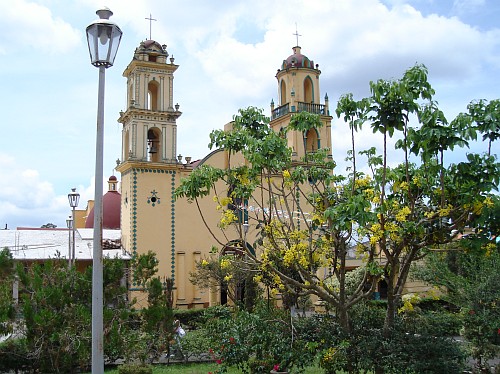
Since Google Earth didn't show the name of the town close to this smaller canyon, we decided to take the bus to Las Trancas, just outside Xalapa, and close to the town we wanted to visit, and ask for directions. However, the people Esme asked the name of the town had no real idea which town she was talking about, so we decided to take the first bus that would go roughly into the right direction, and hopefully I would be able to recognize the town.
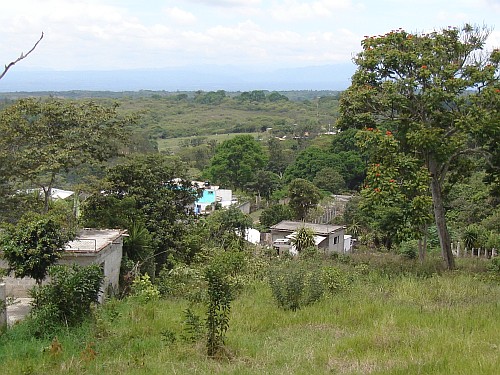
When we got into the bus, Esme asked the person selling tickets if it was no problem if we paid our tickets just before we entered the town, because we had no idea of the name of the town. This was no problem at all. After a short trip, based on the print out I had made with Google Earth, the bus had made a turn to the east too early. So when we arrived in a small town, I decided to get off the bus, and have our walk there. We discovered that the small town was called El Chico (the little one). About a week later we would learn the name of the town we wanted to visit: La Estanzuela.
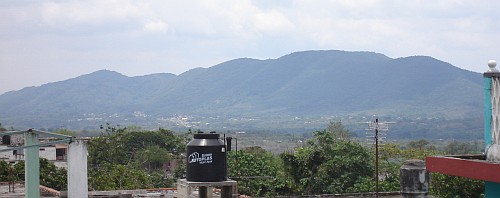
Esme and I decided to follow the road that went uphill, between the houses. The higher we got, the better the view got when we looked behind us. We clearly could see Chavarillo and the hills behind it. One day I want to climb those hills. After some walking we left finally the town behind us.
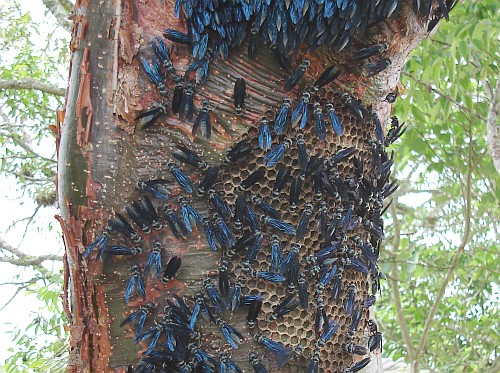
We saw a tree which had a lot of wasps on it with metallic blue wings. I carefully moved as close as possible to take a photo, but somehow I scared them, maybe because I breathed out too strong, and many wasps suddenly flew up. I warned Esme, who was carrying Alice, not to move, and slowly walked back myself, followed by a small cloud of wasps. I was lucky, the wasps didn't consider me a threat, and went back to the three. I slowly moved back to the three, and even more careful this time, took another photo.
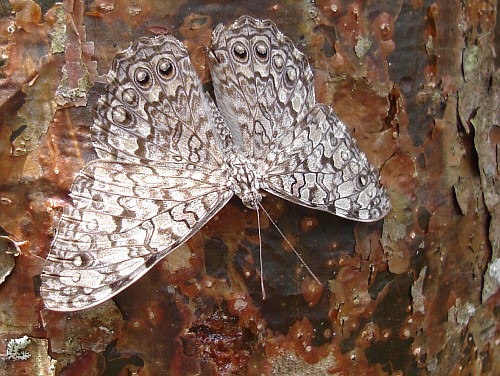
Shortly after the wasp adventure Esme spotted a beautiful Gray cracker (Hamadryas februa) resting on a tree. I got my Sony Cyber-shot DSC-S600 out of its protective bag and turned it on. But what was that weird noise? Somehow when I tried to zoom in or out, the camera made a lot of noise like the engine was not able to move the lens holder. I turned the camera off and back on, but still the same noise. Next I carefully slapped the side of the camera and the third time I did this the camera worked normal again. I have no idea what caused this, but the camera was just over a year old, and this should not happen in my opinion, not even when one has taken well over 9,000 photos with it.
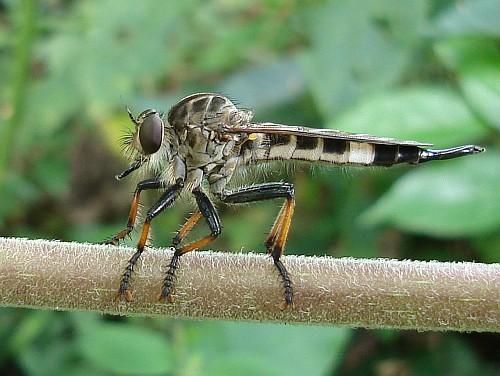
We continued our walk. Shortly after I spotted a robber fly resting on a leaf stalk. I moved as close as possible and made a few photos. The Sony camera had a hard time focussing using autofocus so I made a few photos using focus-lock: I made the camera focus on part of the nearby plant, pressed the shutter button halfway, and moved the camera until I had the impression that the robber fly was focussed correctly and carefully pressed the shutter button all the way down. The above photo is the best out of the series I made. I can't recall if it was made with focus-lock or autofocus thoug. It is one of the best photos I've made with the Sony Cyber-shot DSC-S600 though.
We continued our walk and suddenly I saw a Zebra Longwing, also known as the Zebra Heliconian, fluttering near a plant, and shortly landing on it. I was hoping to make a few good photos of this beautiful butterfly so I carefully moved closer. However, it kept moving a lot, and then I realised that it was looking for good spots to lay eggs, so I did my best to make a few photos of this process.
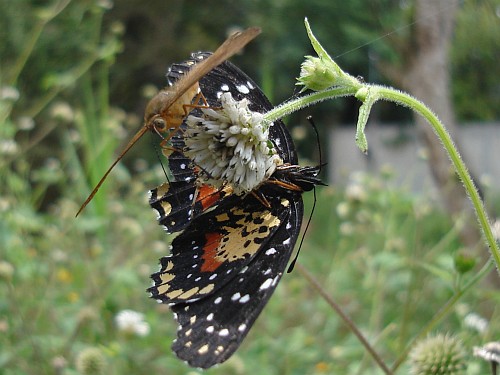
On the other side of the road was an open spot with grass and several high flowering plants with several butterflies flying around and nourishing themselves. I saw several Crimson-patch Checkerspot butterflies, but it was quite hard to get close enough to make a good photo. Using the focus-lock method I was able to make a close-up of a tiny green grasshopper.
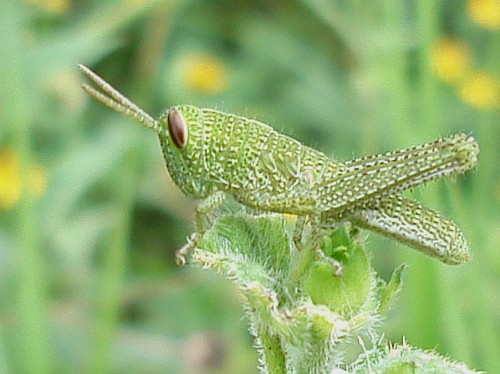
We continued our walk. Several minutes later I noticed a hairstreak butterfly resting on a plant to the side of the road. I took several photos, but only one was sharp. I am not sure of the species of this butterfly, but to me it looks like a Strophius Hairstreak (Allosmaitia strophius). Corrections or confirmations are welcome.

Read the second part of this blog entry in Butterflies, spiders, and more near El Chico.